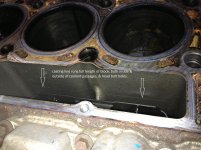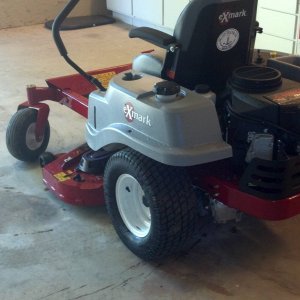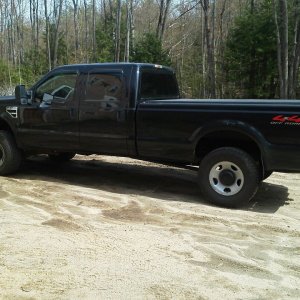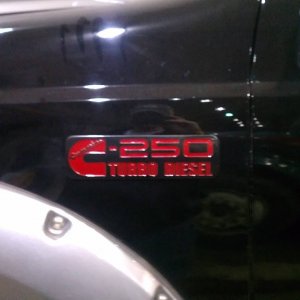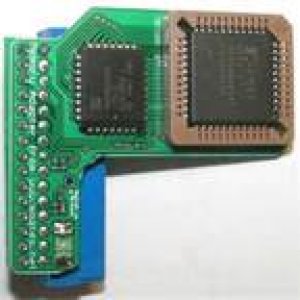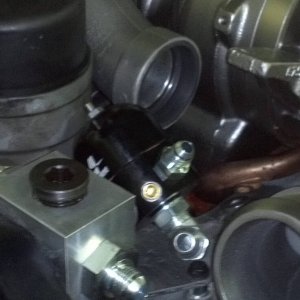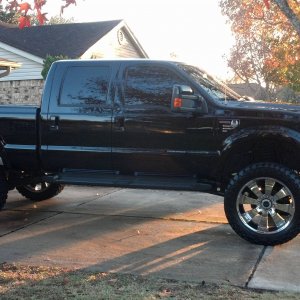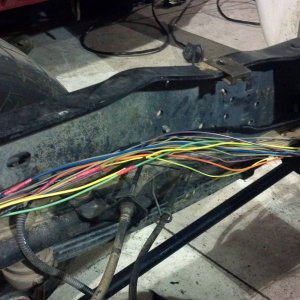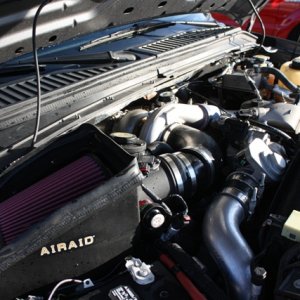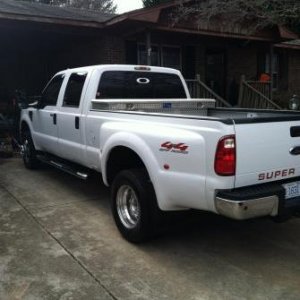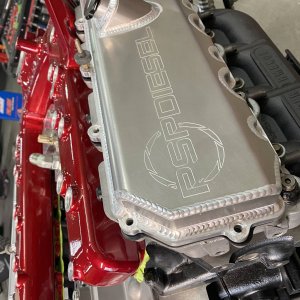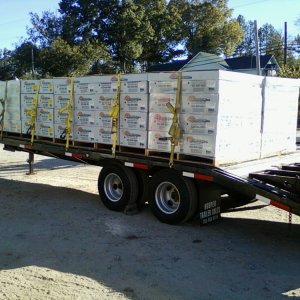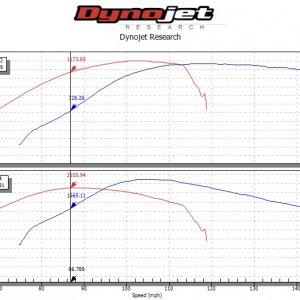If someone was going to build a motor from the ground up, what would you guys do from the start to help the block out?
I've been considering this all day...
We have been filling the 7.3L blocks (even for street use, above 550-600hp) using HardBlok for over 6 years. We also coat the dried/cured HardBlok with an epoxy sealer to prevent coolant circulation from picking up any 'cement' and passing it through the pump/cooler.
The 7.3L blocks have a casting line that radiates from the cam journals...which is where most 7.3L block failures occur...leaving the main caps and crank sitting in the oil pan as an assembly.
The only downside has been the added weight. For 5+ years, we wouldn't recommend building a 600+hp 7.3L withOUT filling the block, unless our bedplate were used.
We have engines with over 100k miles on them that are filled to @ 2" below the block deck...used daily..towing, etc.
Looking at the '08 core engine, and the relationship b/w the casting line and the threaded portion of the block...it appears that the fill would have to be pretttty high to get above the casting (parting) line to gain block rigidity, and minimize/eliminate casting breakage.
Unfortunately, a 4130 pre-hardened steel bedplate (like the one we designed for the 7.3L) wouldn't add any rigidity to THAT part of the 6.4L block.
I will probably end up filling my 6.4L block...and as long as there is @ 2" of coolant circulating in the top of the water jackets...I don't anticipate any cooling issues, even for daily use.
same chit..different day (different
engine platform )...

